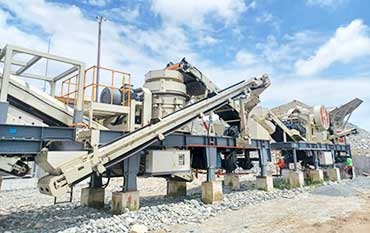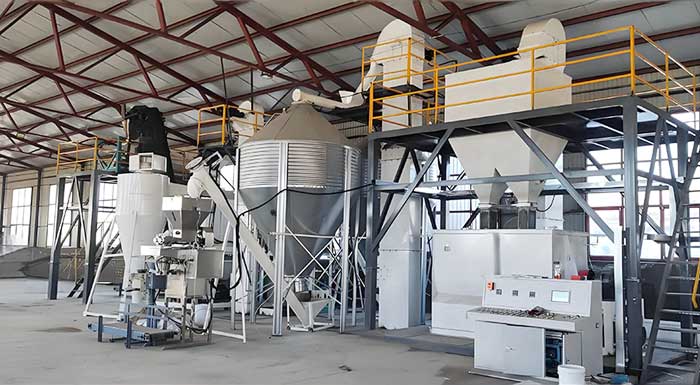Basalt Formation, Properties & Uses

How is Basalt Formed
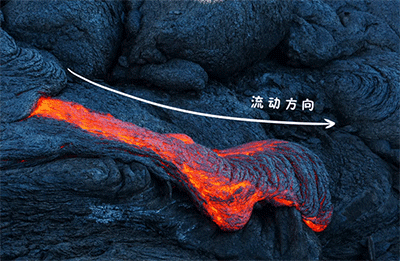
Basalt is a kind of compact or foam shaped rock formed by the cooling and solidification of magma emitted from volcanoes. It belongs to magmatic rocks (also known as igneous rocks) in the classification of rocks in geology.
Magmatic rocks are divided into two types: intrusive rocks and extrusive rocks. Among them, intrusive rock refers to the intrusion of underground magma into the upper part of the crust under the action of internal forces. The rock layer cools and solidifies to form rock, and its mineral crystalline particles are larger, representing granite as the rock.
Ejaculated rock is a type of rock formed by the condensation of underground magma ejected from the surface along the weak zone of the crust under the action of internal forces. Its mineral crystalline particles are small, some of which have flow patterns or pore structures, indicating that the rock is basalt. The characteristic of basalt is its uniform and fine particle structure and small pores, which form its unique texture and structure. Basalt is distributed in many regions of the world, including Hawaii, Iceland, and Italy. The global basalt reserves range from approximately 50 trillion to 500 trillion cubic meters
Basalt Properties

The basalt mainly consists of silicon dioxide, aluminum trioxide, iron oxide, calcium oxide, and magnesium oxide (with a small amount of potassium oxide and sodium oxide), with the highest content of SiO2, generally ranging from 45% to 52%. The content of K2O+Na2O is slightly higher than that of intrusive rocks, while the content of CaO, Fe2O3+FeO, and MgO is slightly lower than that of intrusive rocks. The mineral composition of basalt is mainly composed of basic feldspar and pyroxene, with secondary minerals such as olivine, hornblende, and biotite.
The bulk density of basalt is 2.8-3.3g/cm3, and its compact structure has a high compressive strength, which can reach 300MPa or even higher. However, if there are crystal impurities and pores, the strength will be reduced.
Basalt has high durability, many joints, and the joint surfaces are mostly hexagonal (in basalt lava flows, the vertical condensation surface of the rock often develops into regular hexagonal columnar joints). Moreover, due to its brittleness, it is difficult to obtain large stones. Due to the common occurrence of pores and almond structures, although basalt is widely distributed on the surface, there are not many decorative stones available.
- Appearance: Basalt is a type of extrusive rock, and its cooling occurs on the surface, usually darker and blacker in color.
- Hardness: The Mohs hardness of basalt is 5-7.
- Landform Characteristics: Due to the low viscosity and high fluidity of basaltic magma, it is easy to form large-scale lava flows and covers when it spills over the surface, but there are also layered intrusions, such as rock beds.
- Mineral Distribution: Basalt is widely distributed in various oceans and continents.
Basalt Uses
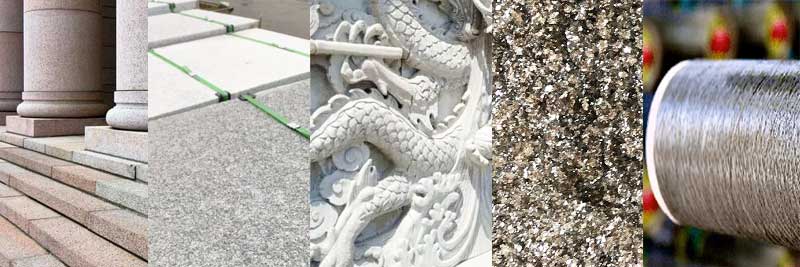
1. Basalt as Building Material
Basalt, as a building material, is widely used in the field of architecture. It has characteristics such as durability, ruggedness, and aesthetics, making it widely used in various types of buildings.
As a building material, basalt also has unique physical properties, such as low thermal conductivity and flame retardancy. These characteristics largely ensure building safety. The diversity of basalt also meets the personalized needs of architecture for colors, patterns, and more.
2. Basalt as Road Material
In addition to the above, basalt is often used as a substitute for granular materials such as pebbles, and is applied in road pavement. Compared to traditional pebbles, basalt has advantages such as darker color, lower water absorption, wear resistance, and strong compressive strength. In addition, basalt pavement also has good anti slip effect, which can effectively prevent traffic accidents and improve driving safety.
The application of basalt pavement has basically been proven to be an economical and practical alternative, with its excellent physical properties making it suitable for various height requirements, such as in airports, ports, highways, highways, etc.
3. Basalt in Field of Carving Art
Basalt has the advantages of high density, high hardness, and good properties, making it very suitable for making carving works of art. There are a variety of artworks carved from basalt, which can be made into various cultural artworks. Basalt carving works of art also have the characteristics of anti-aging and good durability, which attract more and more people’s attention.
4. Basalt in Field of Environmental Protection
Basalt has characteristics such as durability, strong stability, impermeability, hardness, and corrosion resistance, making it widely used as an environmentally friendly material in some fields.
Basalt is also widely used in landfills. Its performance in the landfill cover layer is very excellent, not only making the landfill free from pollution, but also having strong durability, which can effectively reduce the pollution problem of the landfill.
5. Basalt Fiber and Its Composite Materials
Basalt can be made into basalt fibers and their composite materials for use in the engineering field. Compared with other organic fiber materials, basalt composite materials have the characteristics of high and low thermal expansion, high UV resistance, and so on.
6. Other Uses
In some important engineering fields, such as buildings, bridges, aircraft, automobiles, highways, etc., basalt fibers and their composite materials have important applications.
Basalt is harder and more wear-resistant than alloy steel, and more resistant to corrosion than lead and rubber. Basalt also plays a role as a “lubricant” in an advanced steel casting process, which can extend the lifespan of the casting film.
Basalt is a good grinding material that can be used to grind metals and stones. In industry, it can also be used as a filter, dryer, catalyst, etc.
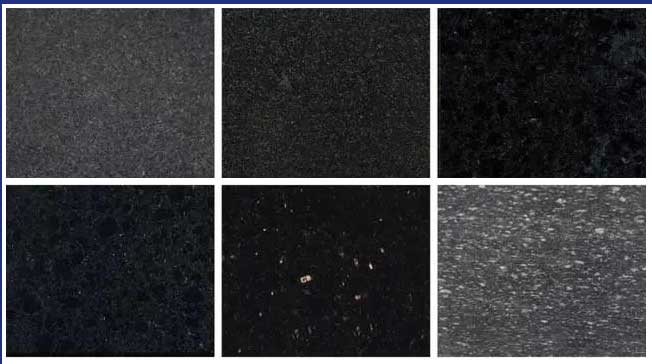 What is Granite [Composition, Properties, Types, Uses]
What is Granite [Composition, Properties, Types, Uses] 20 Common Types of Cement [Properties & Uses]
20 Common Types of Cement [Properties & Uses] What is Tungsten [Applications, Properties, Types, Distribution]
What is Tungsten [Applications, Properties, Types, Distribution]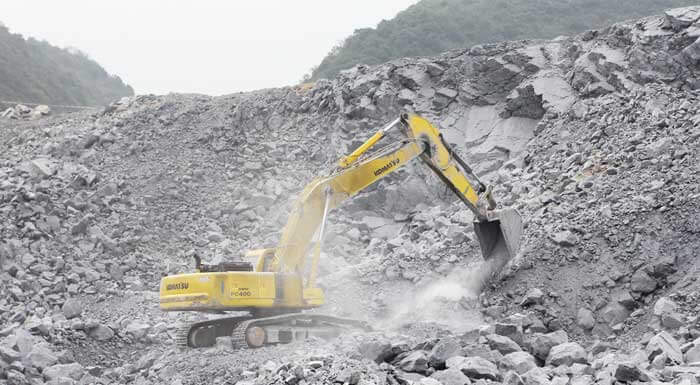 limestone | Composition | Properties | Source | 6 Types | 10+ Uses
limestone | Composition | Properties | Source | 6 Types | 10+ Uses